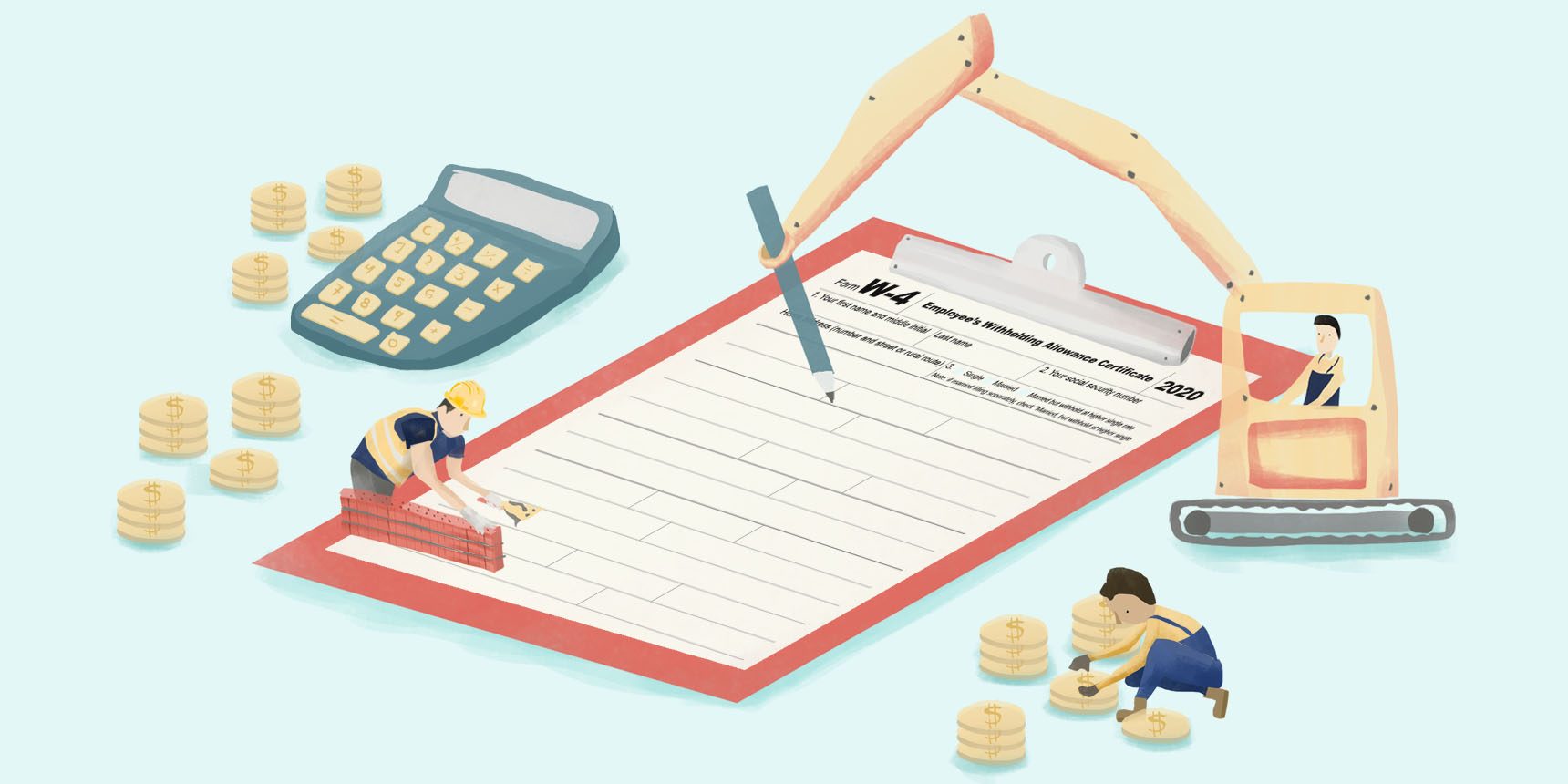An employee’s withholding certificate, or W-4, is an IRS form that specifies how much tax should be deducted from each paycheck. Employers calculate some payroll taxes using the W-4 and, on behalf of employees, send the taxes to the IRS and the state (if applicable).
Many taxpayers typically fill out a W-4 tax form on the first day of a new employment and wonder, “What is a w-4 form?” You are not the only one if this is you. The definition of a W-4 form and how it affects your taxes are concepts that many taxpayers find difficult to comprehend.
The W-4 is the IRS form that you fill out for your employer to establish how much should be deducted from your paycheck for federal income taxes, therefore it’s crucial to understand what it means. In actuality, accurately completing your W-4 and getting all of your questions resolved might help you avoid paying too much in taxes throughout the year or owing a significant balance at tax time.
How to fill out a W-4
The W-4 form contains five steps. Not every step is applicable to every employee, so some sections might correctly remain blank.
1. Step 1
Here, every employee provides personal information. Make sure the name, address, and social security number entered match what payroll has on file.
This section also asks filing status: single or married filing separately, married filing jointly or qualifying widow(er), or head of household. Be certain only one box has been checked. Knowing someone’s correct filing status is vital because it determines the standard deduction and tax rates used to compute withholding.
2. Step 2
Only a person with more than one job or a spouse who works (and together filing jointly) completes this section. Following the specific instructions that pertain to one’s circumstance improves the accuracy of withholding. Some people will use the worksheet provided. Others will use the IRS’s tax withholding estimator.
3. Step 3
People claiming dependents need to complete this section. It provides instructions for determining the amount of the child tax credit and the credit for other dependents that the employee may be able to claim when he files his federal tax return. Like in step 2, such information increases the accuracy of withholding. (Remember, from the perspective of the IRS, the goal is to come as close as possible to nothing owed and nothing refunded upon completion of the annual federal income tax return.)
4. Step 4
This optional section is the place for other adjustments that aren’t job-related. Job-related input, including projected earnings from self-employment, goes in step 2.
An employee who wants an additional amount of tax withheld for other income she expects this current year that won’t have automatic withholding enters the amount of other income in this area’s line A. This total frequently includes interest, dividends, and retirement income. People who complete this line often do so as an alternative to making estimated tax payments on their own. They find it easier to have the amount deducted from their paycheck rather than completing 1040-ES paperwork and making payments themselves.
If an employee expects to claim deductions other than the standard deduction and wants to reduce withholding, line B is the place to input this information. The Deductions Worksheet included with the W-4 assists in deriving the correct figure. Itemized deductions and other deductions such as for student loan interest and IRAs come into play here.
Step 4 line C is the place for the employee to request extra withholding from his paycheck. Someone may choose this voluntary reduction in order to receive a larger tax refund or reduce the amount of tax he expects to owe come tax time. Employers do not need to know the person’s reason. Rather, just be mindful of this additional amount the worker wants deducted each pay period beyond what you’re required by law to withhold.
5. Step 5
Make sure the employee signs and dates appropriately in this section. You’re responsible for completing the remaining items: employer’s name and address, first date of employment, and Employer Identification Number (EIN).
What Are Withholding Adjustments?
You may determine how many allowances you will receive in 2023 using an allowance worksheet. In general, you are eligible to claim allowances for yourself, your spouse (if you’re filing jointly), and any children under the age of 17 for whom you are eligible to claim the child tax credit.
In connection with credits and deductions, there are additional withholding allowances available. If you itemize your deductions, for instance, you may add more allowances.
The 2023 W-4 has information sections on dependents and additional income, a worksheet for multiple employment, and a worksheet for deductions. All of these can assist you in determining the amount of withholding that will be deducted from your paycheck. The worksheets are intended to reduce your amount owed to zero so that you pay no taxes at all. But if you want a bigger refund, you can still have a different amount deducted from your pay.
Even though the calculations might appear a little complicated, there are resources available to help you find the answers you need before completing your W-4 form. The W-4 payroll tax calculator is one such tool that is worthwhile using. You can use this tool to determine how many allowances or your desired withholding amount to list on your W-4 by simply entering your information.
Bottom Line
Before an employee even starts working for your firm, you can make their experience valuable. There are numerous ways you may find meaningful moments to add during the interview process, onboarding, and throughout the rest of their experience.
SW HR Consulting has been helping companies to build their teams and values for over 10 years. Contact us to find out more about our unique hr outsourcing services and see how our expertise can benefit you.







